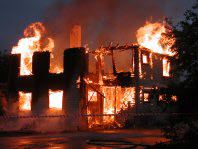
|
These are among the results of a report from SINTEF Norwegian Fire Laboratories, which also identifies measures that could reduce the number of fires, particularly those of electrical origin or that are due to the inappropriate use of electrical equipment. Taken together, these are the most frequent causes of fires in Norway.
The report also tells us how we and society as a whole can improve fire safety for our old people who live at home; measures repeated here by Gemini in this report.
This is a topic of great relevance in Norway, where the Ministry of Justice is currently drawing up a report on fire prevention.
“Something must be done!”
For the past seven years, between 44 and 58 people have died every year in house fires in Norway.
“Without extra fire prevention measures, these figures will increase drastically as the number of elderly people rises”, says senior scientist Bodil Aamnes Mostue of SINTEF NBL.
The warning is being issued now because elderly people are heavily over-represented in lethal house fires, and because they will be more likely to live in their own homes in the future. At an average rate of population growth, the number of people aged 67 or more will more than double between now and 2050.
“On average, 18 persons more than 70 years old die in house fires every year in Norway. Unless we launch a fire protection campaign, the average number of deaths a year will rise to about 38 by 2050”, says Aamnes Mostue.
Measures for everyone – including risk groups
In its report, SINTEF NBL has estimated the economic benefit to society of more fire protection measures; in other words, this means that the institute has calculated whether the financial savings in terms of lives saved, fewer personal injuries and reduced material damage, are greater than the costs of the measures involved.
The report shows that there are measures that could be put into effect in all households and that are cost-beneficial for society – such as more frequent inspections of electrical installations. It also identifies measures that are close to being of benefit to society as a whole if they are directed specially at houses with old people.
For instance, it would be beneficial in social terms to let all households invest in a kitchen stove alarm, which is set off when the electric cooker becomes overheated, such as when a pan boils dry. Such alarms are already on the market. If they were installed in all homes, they would save three to six lives a year, the report shows.
According to Aamnes Mostue, a requirement to install such alarms is scarcely realistic, since it is likely that safety devices to prevent pots from boiling dry will probably be built into electric cookers within a few years.
“However, until devices of this type arrive, the alarm is a sensible fire prevention measure, especially for elderly people. For those who do not understand alarm signals, an automatic “stove guard” would be better. These cut the power supply to the stove when a pan boils dry. If you have elderly or confused family members, stove guards are an inexpensive form of life insurance, even though they are still so expensive that it does not pay in
social terms to require them in all homes”, she says.
Worst members of the electrical products family
Kitchen stoves, cooking plates and so on are the types of electrical apparatus that cause most house fires in Norway, with almost 20 percent of fires of known origin starting in such equipment. According to Aamnes Mostue, most such fires are caused by pots boiling dry.
“So far, we have no evidence to suggest that old people are responsible for more “boil dry” fires than younger people. But if we can prevent fires from starting with the aid of stove alarms and stove guards, this would be particularly valuable for older people, because they may not be able to save themselves once a fire has started”, she says.
Fire extinguishers in houses with old people
The fire researcher points out that the social-economic results of many fire prevention measures are improved if the measures are focused on high-risk groups such as elderly people.
The report demonstrates that automatic extinguishing systems are close to being socially worthwhile if they are installed in houses where old people and people with reduced functional abilities live.
According to Aamnes Mostue, easily installed portable automatic extinguishing systems could be one solution in ordinary homes in which old people live. At the same time, she emphasises that it is difficult in practice to link such measures with age.
Need for integrated package of measures
The report points out that the rise in the number of elderly people will make it necessary to coordinate all requirements that regulate building design, technical aids, home care and organisational measures, including assistance from the fire brigade.
“Current emergency services are not adequate for rescue operations in housing blocks in which 80 percent of the residents may be more than 70 years old. In many cases, the fire brigade would face major problems if they needed to rescue more than one or two persons with reduced mobility by ladder”, says fire researcher Bodil Aamnes Mostue.
SINTEF NBL drew up its report on behalf of the fire authorities, a number of insurance companies and the industrial organisations of the finance and electrical installation sectors.
